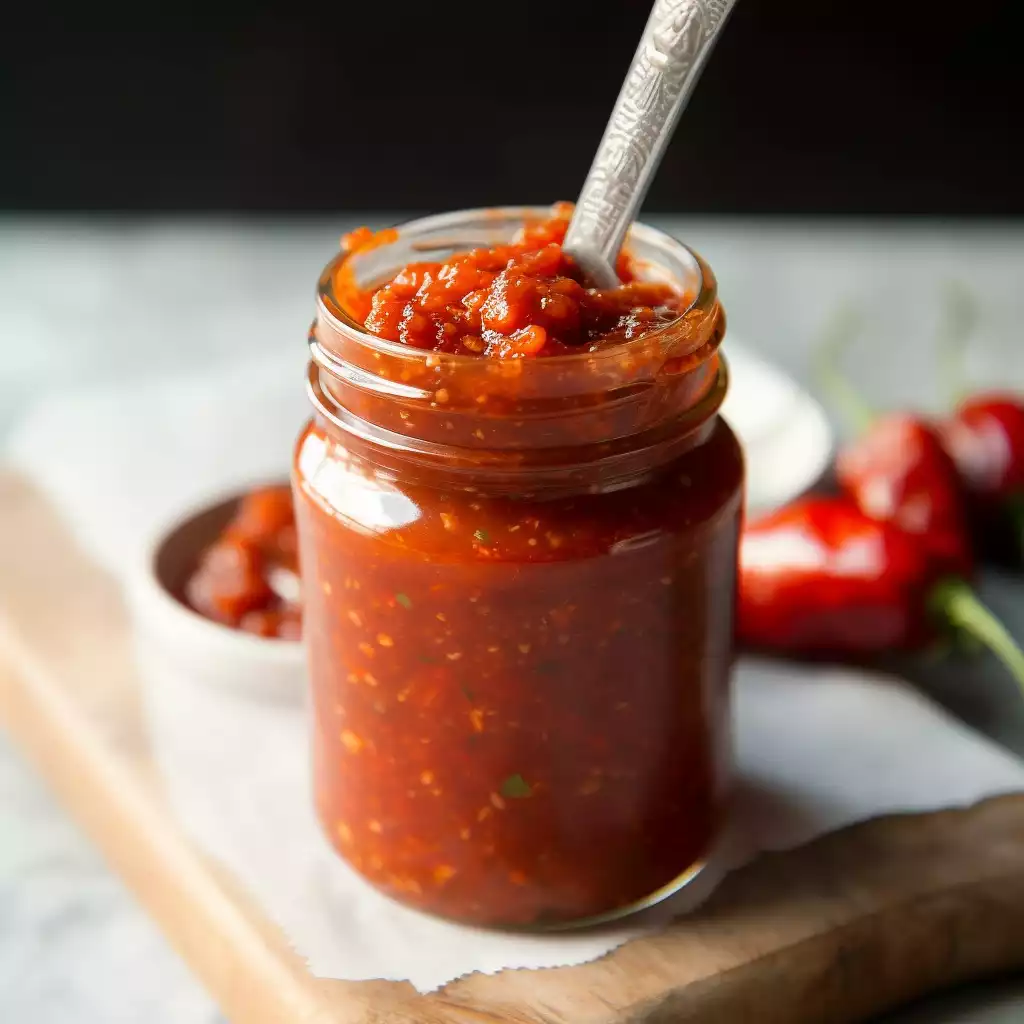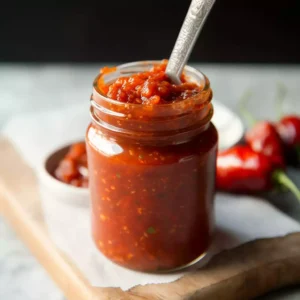
Introducing a classic condiment with a twist: Tomato Chutney. Originating from South Asia, chutneys are savoury and tangy accompaniments that add depth and flavor to various dishes.
This delightful condiment has been enjoyed for centuries, hailing from the rich culinary traditions of India. The history of this recipe dates back to ancient times when tomatoes were first brought to the Indian subcontinent by European colonisers.
The origin of tomato chutney can be traced to the southern states of India, where it was traditionally served as a side dish to rice, dosa, or idli. Over time, this versatile chutney has gained popularity all over the world, thanks to its bold flavours and easy preparation.
Despite its exotic origins, making tomato chutney at home is surprisingly simple and requires only a handful of ingredients. The recipe difficulty level is beginner-friendly, making it a great option for aspiring home cooks looking to experiment with new flavors.
With just a few basic ingredients like fresh tomatoes, spices, and herbs, you can whip up a batch of homemade tomato chutney that will elevate any meal.
Oil: Oil is used as a cooking medium in this recipe to sauté the garlic, red onion, and tomatoes. It helps to prevent the ingredients from sticking to the pan and adds flavor to the chutney.
Tomatoes: Tomatoes are the main ingredient in this chutney, adding a tangy and sweet flavor. They also provide a rich red color to the chutney.
Garlic Cloves: Garlic cloves add a pungent and spicy flavor to the chutney. They are sautéed in oil to release their aroma and flavor.
Red Onion: Red onion adds a sharp and sweet flavor to the chutney. It is sautéed along with the garlic to bring out its natural sweetness.
Salt: Salt enhances the flavors of the other ingredients in the chutney and helps to balance the sweetness of the tomatoes and onions.
Chilli Powder: Chilli powder provides heat and spice to the chutney. The amount can be adjusted based on personal preference for spiciness.
Green Chillies: Green chillies add a fresh and spicy flavor to the chutney. They can be adjusted based on personal preference for heat.
Coriander: Coriander adds a fresh and herbal note to the chutney. It is garnished on top of the chutney before serving, adding a pop of color and flavor.
To serve this flavourful Tomato Chutney, you can try a variety of serving suggestions and variations. Here are some ideas to make the most of your homemade chutney:
For variations on this Tomato Chutney recipe, you can experiment with different ingredients to suit your taste preferences. Here are some ideas for customising your chutney:
Tomato Chutney is a delicious and tangy condiment made with fresh tomatoes, onions, spices, and sugar. It is a versatile accompaniment that pairs well with a variety of dishes such as dosas, idlis, rice, and sandwiches.
Tomato Chutney should be stored in an airtight container in the refrigerator. Properly stored, it can last for up to 1-2 weeks.
Yes, you can freeze Tomato Chutney. Simply transfer it to a freezer-safe container and store it in the freezer for up to 3 months. Thaw in the refrigerator before using.
Yes, Tomato Chutney is typically vegan-friendly as it is made with plant-based ingredients. However, it is always best to check the specific ingredients list to ensure there are no animal-derived products.
Tomato Chutney can be enjoyed in a variety of ways. It can be used as a dip for snacks, spread on sandwiches or wraps, mixed with rice or grains, or served alongside Indian dishes such as dosas, idlis, and samosas. Use your imagination and get creative with how you enjoy this flavorful condiment!
Here are some more recipes for you to enjoy! If you my recipes don’t forget to rate and leave a comment.
If you have any recipe suggestions, please do not hesitate to ask me. A great way to stay in contact with me is through Instagram, Facebook, Twitter and YouTube. Don’t forget to tag me @CookwithNabeela in your recipe photos!

Subscribe now to receive my latest recipes directly in your inbox. Stay up-to-date and never miss out!

I love to cook! I want to share with you my favourite, delicious family-friendly recipes. I want to inspire you to create fantastic food for your family every day.
Latest comments (2)
Tastes just like a chutney my mom makes! Tastes great with paranthas, and even on its own :p
That’s wonderful to hear! I’m so glad you enjoyed my tomato chutney recipe. It’s always special when a recipe can bring back fond memories. Thanks for sharing your experience with us!